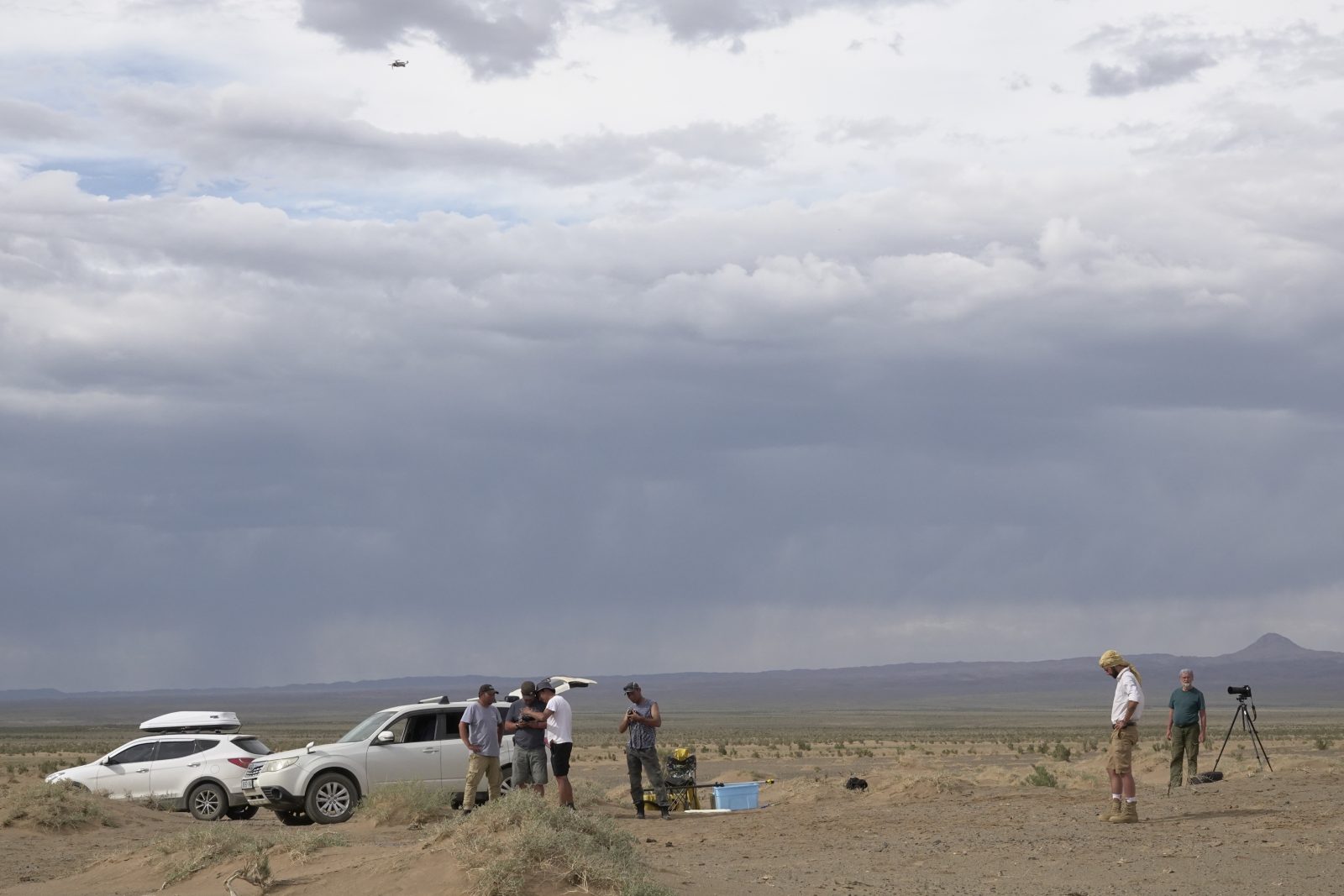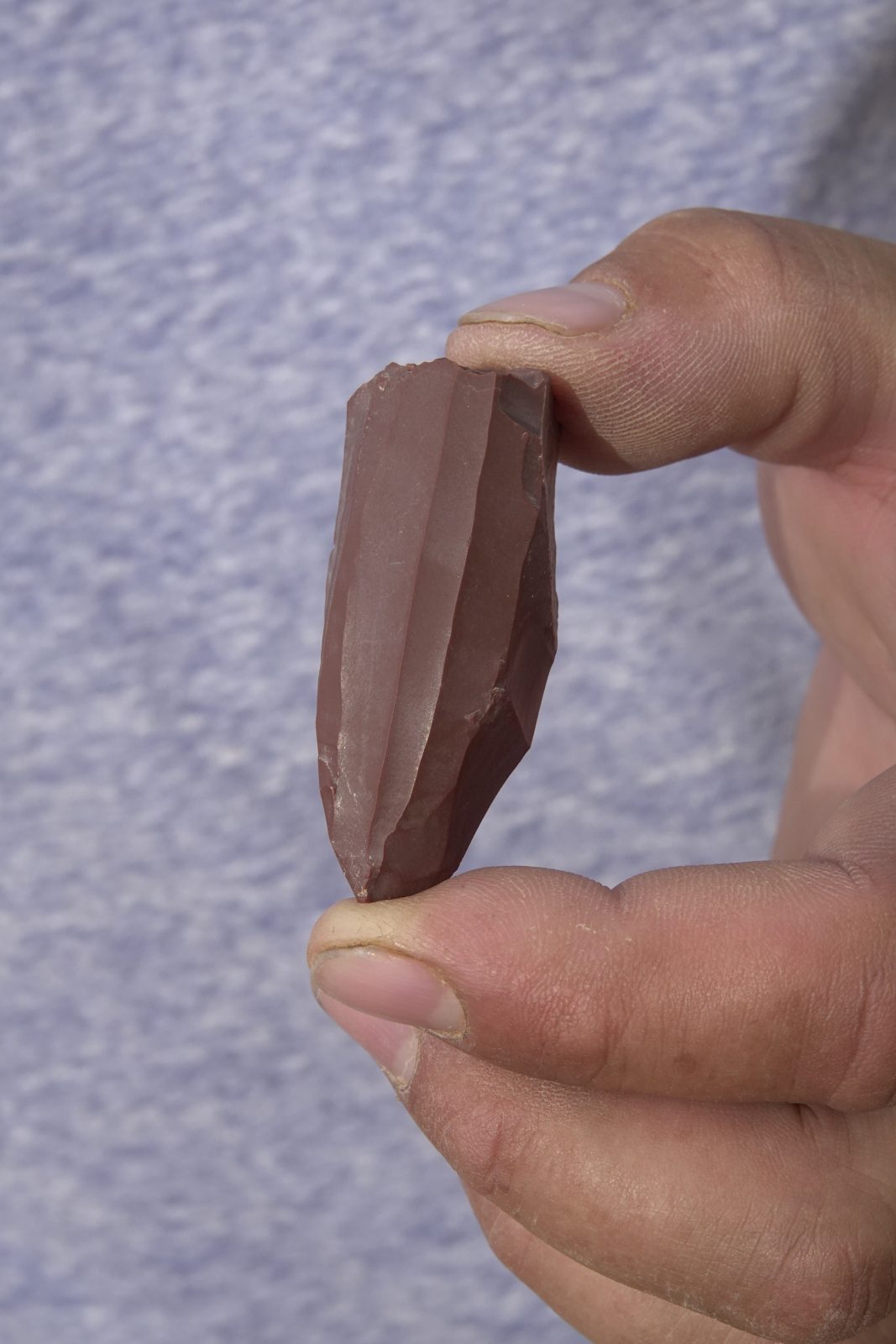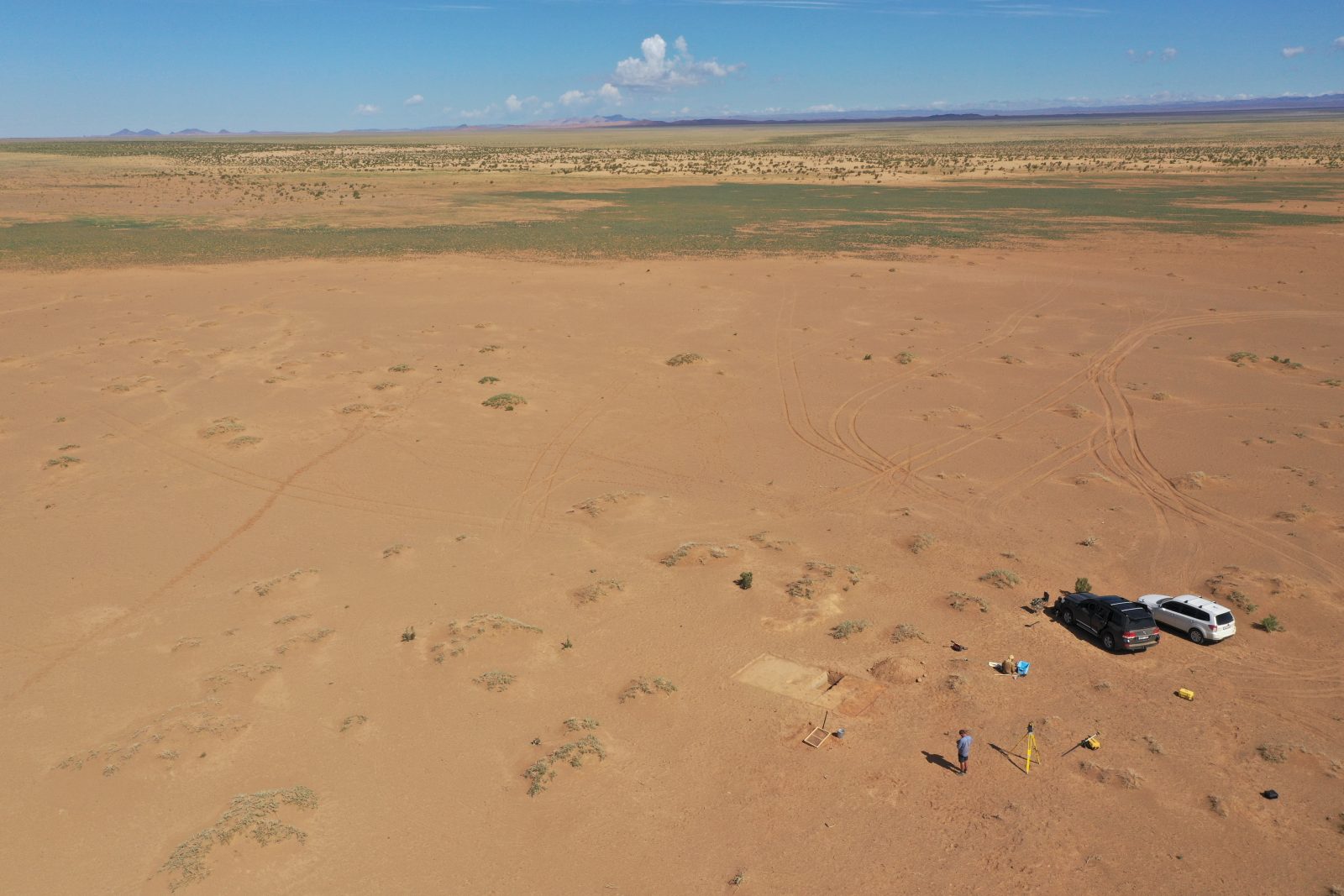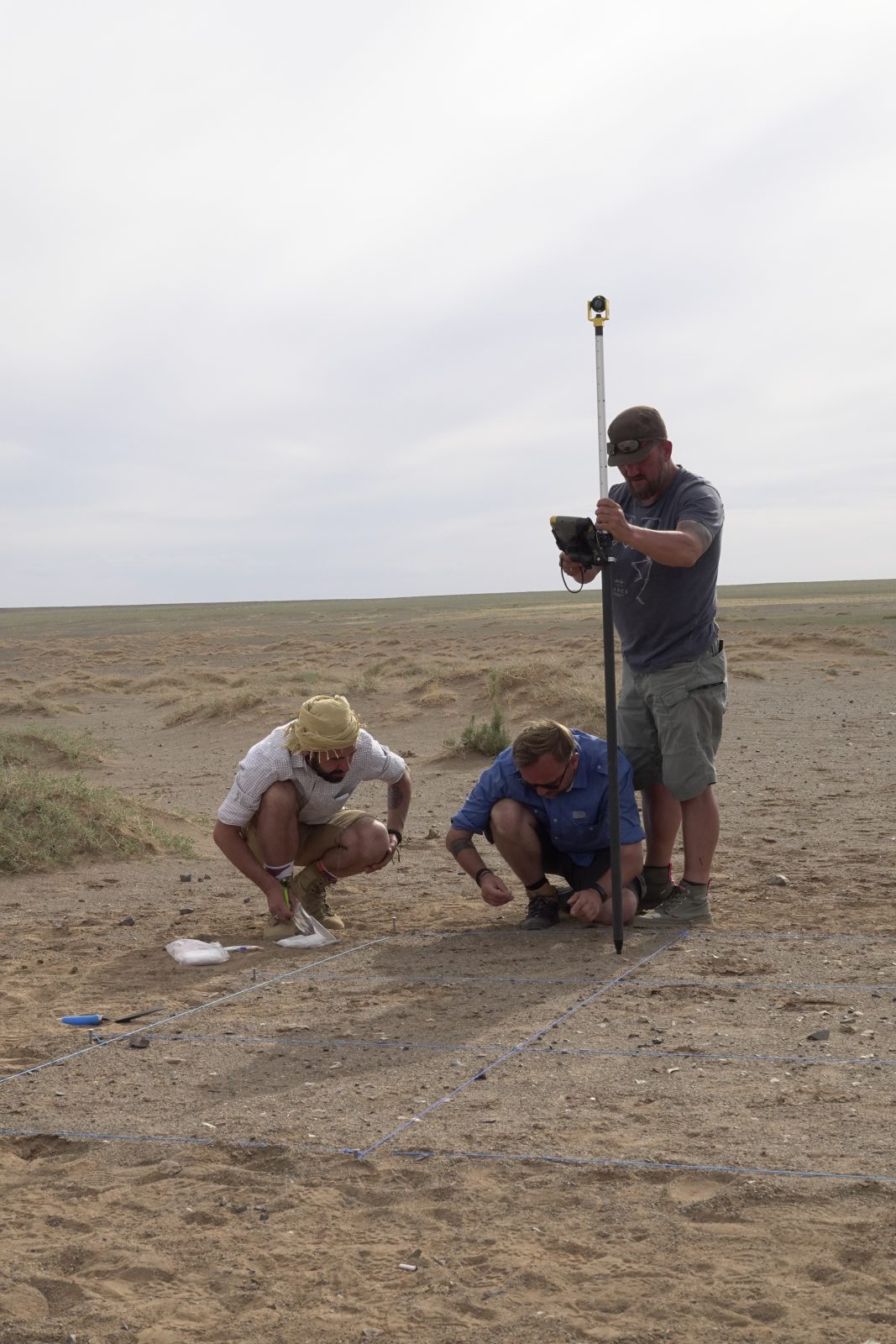
Secrets of the Gobi Desert from thousands of years ago revealed!
“Our research shows that more than eight thousand years ago, the area of today’s Gobi Desert had completely different environmental conditions,” said Grzegorz Michalec, a doctoral student at the Doctoral College of Archaeology, Arts and Culture and the Institute of Archaeology of the University of Wrocław.
At the beginning of September, the research journal PLOS One published a paper that reveals the secrets of the Gobi Desert from eight thousand years ago! The co-authors of the article “Geoarchaeological research on site formation process, paleoenvironment, and human behaviors in the early Holocene of the Gobi Desert, Mongolia” are UWr archaeologists Grzegorz Michalec, prof. Józef Szykulski and prof. Mirosław Masojć.
What were human-beings doing in the desert? And was it even a desert back then?
Grzegorz Michalec, the Institute of Archaeology, the University of Wrocław: “Our research shows that more than eight thousand years ago, the area of today’s Gobi Desert had completely different environmental conditions. Nowadays, it is one of the driest and least suitable regions for human settlement in the world. In the Early Holocene, however, the conditions were completely different – the climate was much more humid, which allowed paleolakes to exist. These water reservoirs created perfect conditions for human settlement. In addition to being a source of water and food, the area also provided plant raw materials used to make everyday items.
What are the signs of human presence in this area?
During the geoarchaeological research conducted around the Luulityn Toirom Paleolake, we discovered numerous sites associated with the activity of hunter-gatherer communities in different time periods, mainly in the Pleistocene and Early Holocene. The example of such a site, discussed in the article, is FV92. There we found visible surface concentrations of stone artifacts, which represent the remains of a small seasonal campsite and a stone tool production workshop. Besides that, a fragment of an ostrich egg shell was discovered.
Which tools (technologies) did you use for research?
First of all, we use a tool that anyone can access – satellite photos. Today’s technological tools and services, provided for example by NASA or the European Space Agency’s Copernicus program, have made it possible to examine satellite images generated in short intervals. By analysing satellite photos from different periods, we can identify – while sitting at the desk – the remains of paleolakes and watercourses that are no longer active today.
The next stage would cover work at the site?
Yes, we carried out geoarchaeological research there. Over several days, a group of five people searched a designated area in order to find surface concentrations of artifacts. Such concentrations of artifacts can be located with using simple GPS devices.
The site FV92 is located near the edge of a paleolake, which was one of the conditions for selecting it for excavation work. Our research goal was to establish the chronological framework of human activity, environmental conditions, and site formation processes, as well as the strategy of survival and the level of communal mobility.
Was the research at the site conducted using traditional archaeological methods?
Yes. The artifacts discovered on the surface were located using a robotic total station. Excavated sediments were dry-sieved through meshes. In the central part of the excavation, we deepened the trench to check the stratigraphy. Thanks to this, we discovered that the campsite was located near a small seasonal watercourse that flowed into the lake.
Within the paleolake, we carried out a series of drillings, which allowed us to reconstruct the picture of how the lake functioned during different periods and what the environmental conditions were. The drilling was done with hand-held geological drills; this required great effort and time to reach a depth of five metres. Samples were taken from all profiles and drill cores for specialized analyses, including sediment characterization and chronological dating using Optically Stimulated Luminescence (OSL).
Is this still archaeology or rather geology?
In contemporary science there are many multidisciplinary activities, and our research is an example of that. That is why we can confidently call it geoarchaeological, as it combines two fields – geology and archaeology. This approach concentrates above all on the processes of archaeological site formation, as well as on the relationship between humans and the environment in prehistory. I personally prefer working in teams that include specialists from different fields. Such an approach provides not only enriching, but also gives better opportunities to reconstruct the past and to look at the same issues from different research perspectives.
What knowledge can the location of the artifacts provide?
Analyses of the artifacts’ location shows that discovered concentration does not reflect the original function of the site and represents post-depositional processes. In the first period after people left this place, up to about 8 thousand years ago, fluvial processes, in the form of seasonal water runoff from the mountain area, mainly influenced the horizontal displacement of the artifacts. Later, with the drying of the climate and the desertification of the area, aeolian processes began to play the main role – erosion, transport and accumulation caused by wind.
What were the environmental conditions in this area during human activity in the Early Holocene?
The Early Holocene, unlike the preceding Late Pleistocene period, was a much warmer and more humid period. Our research shows that during this time there was an extensive network of watercourses and lakes in the foothills of the Altai Mountains, which created excellent conditions for both people and animals. Previous research results indicated that very favourable conditions occurred in the Middle Holocene, in the so-called climatic optimum (8,000-5,000 years ago), when the strong influence of the East Asian summer monsoon system had a clear impact on shaping environmental conditions. However, our results show that even in the earlier period there were relatively humid conditions. This can be connected to dynamic climatic changes and the melting of glaciers in the northern hemisphere, which led to releasing of large amounts of water.
What can we tell about the people – what were their survival strategies?
First of all, they used very sophisticated methods of stone tools production. They searched for small semi-finished product – defined by archaeologists as stone flakes – no longer than 5-6 cm and about 0.5 cm wide. Such semi-finished products were processed into tools that served as elements of hunter weapons (e.g. small inserts used in arrows) and so-called household tools – drills, piercers, etc. Interestingly, only one discovered tool, in the form of a small geometric insert, can be interpreted as element of a hunting weapon. In production, the pressure method was used, which relied on applying force generated by body weight through an intermediary, rather than direct impact with a hard or soft hammer.
Another interesting aspect was the use of production waste – flakes – from the initial preparation of cores (stone blocks from which the intended products were detached) as a raw material for making household tools. Thanks to such a production chain, toolmakers could use the largest possible volume of the raw material block without significant losses when switching the production method.
And what about microscopic analyses of the material?
The analyses allowed us to say more about the activities performed with these tools. The environmental conditions in the Gobi Desert are not conducive to the preservation of organic materials at archaeological sites. However, use-wear analysis helps in this situation. A bifacial axe discovered at the site shows that it was mounted in a handle (likely wooden) and used for working with wood.
Some tools have traces of working soft plant materials, which can be an evidence of collection fibres and plant materials processed into various tools and everyday use – baskets, containers, ropes, clothing, etc. Moreover, we also have proof of bone processing and the preparation of animal skins obtained during hunting. The analysis of raw materials and population movements suggests that we are dealing with communities with a medium mobility model, defined as “collector”. These communities are characterized by the presence of mainly seasonal campsites (for example, winter and summer) and by the use of locally available resources. They functioned in specialised smaller sub-groups of several people, who performed specific tasks – for example, collecting stone or plant materials, fishing, hunting. The remains at site FV92 are interpreted as a small campsite associated with specialised activity, likely the collection of organic raw materials and the workshop production of stone tools.



____________________________
The article in the research journal PLOS One was created through the cooperation of a team of scientists representing a number of institutions from Poland and Mongolia, including the University of Wrocław (Grzegorz Michalec, Prof. dr hab. Józef Szykulski, Prof. dr hab. Mirosław Masojć), the Polish Geological Institute – National Research Institute, Polish Academy of Sciences, Archaeological Museum in Gdańsk, Archaeological Museum in Poznań, Mongolian Academy of Sciences and Mongolian National University of Education.
The research was conducted within the framework of the project “Around Tsakhiurtyn Hondi. Research on the Stone Age of the borderland area between Altai and the Gobi desert in Mongolia”, led by prof. Mirosław Masojć from the Institute of Archaeology of the University of Wrocław and financed by National Science Centre (2019/33/B/HS3/01113).
Link to the project website
Link to the article.
Translated by Darya Tserashkevich (student of English Studies at the University of Wrocław) as part of the translation practice.
Date of publication: 08.09.2025
Edited by Katarzyna Górowicz-Maćkiewicz
Added by: EJK



